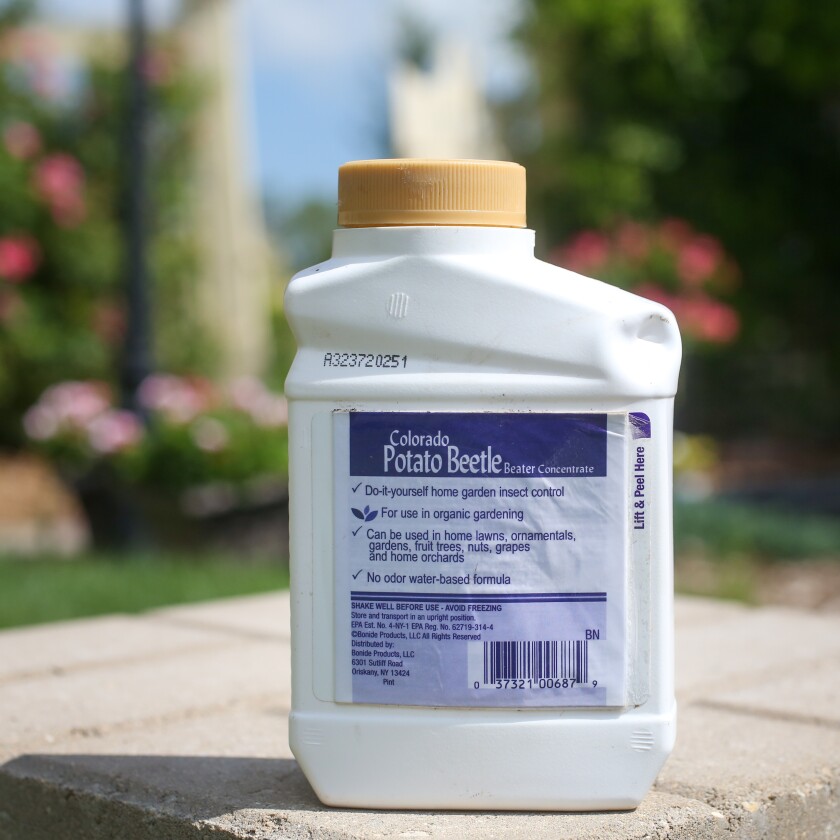Do you know why ants never get sick? They have anty bodies.
Ants are annoying if they get into the house or make their anthills in places we’d rather they wouldn’t, but they don’t cause many problems to plants, including vegetables.
ADVERTISEMENT
Although ants have never given me trouble in our vegetable garden, battling other insects has been a lifetime task. I don’t remember a year I haven’t needed to protect our cabbage, or they’d be riddled with holes. Broccoli is unappetizing when you discover green worms lurking on a freshly picked head.
Like most gardeners, I’ve encountered the following common vegetable insects. Luckily, there are remedies if applied at the first signs of activity, which we’ll discuss after.
Flea beetles. They often go unseen because they’re so small, and it’s usually their damage that reveals their presence. These small, black, pinhead-size beetles cause small shot-hole damage to the leaves of radish, kohlrabi, cabbage, cauliflower and broccoli. Because their activity begins early in the season when plants are young, flea beetles can cause significant damage.
Bean leaf beetles. Although they’re larger than flea beetles, it’s usually their extreme feeding we first see. The quarter-inch tan beetles with black spots feed on the undersides of string bean plants, causing large holes, and plants can be quickly skeletonized and ruined.
Colorado potato beetle. These fat, round, half-inch beetles are easily spotted on potato plants, with their yellow bodies and black stripes. Newly hatched larvae are brick red with black heads. Adult beetles and larvae can quickly turn potato plants to skeletons. My dad talked of walking their potato patch and handpicking beetles and dropping in a can of kerosene, which is still a control option. If leaves are scouted before the larvae hatch, you can find the clusters of orange eggs attached to the underside of leaves, and remove the leaf, which cuts down on numbers.
Cabbage worm. Also called cabbage loopers, these green larvae hatch from eggs deposited by white or yellow cabbage butterflies that flit through the garden. The hungry green worms create holes in cabbage and its close relatives, cauliflower and broccoli.
Striped cucumber beetle. As the name describes, these yellow-bodied beetles have black stripes, are about one-fifth-inch long and are longer than wide. They attack cucumbers and their close relatives, such as squash, pumpkins, watermelon and muskmelon. Besides feeding on the leaves, they can carry bacteria that cause a wilting disease.
ADVERTISEMENT

Squash vine borer. Extremely prevalent, these insects quickly ruin a crop of squash and sometimes melons, pumpkins and cucumbers. The adult moth begins laying eggs on the basal stems of squash plants in late June or early July. The eggs hatch into larvae that tunnel into the squash stem, causing vines to quickly wilt as though they’re dry. They might recover at night, but vines soon collapse and won’t recover. Preventative insecticides are applied to the lower 12 to 24 inches of squash stem from soil level upward. The small, tan eggs can sometimes be found clinging to the stem a short distance above the soil line, and removed before they hatch.
Control methods
Luckily, we don’t need separate insecticides for each of these common pests. Following are products that are handy to keep on the garden shelf, since they’ll safeguard vegetables from a number of the pests listed. Always read and follow the label instructions.
Sevin and Eight. I’ve found them to be somewhat interchangeable in managing many of the insects described, so I keep one or the other on hand. Insects controlled are listed on the labels.
Spinosad. This will be listed on the label as the active ingredient, and there are several brand names. Besides controlling many other insects, it’s currently the most effective control for Colorado potato beetle, which has become resistant to many other insecticides. Spinosad is an organic compound.

Malathion. Although it’s been around a long time, it remains an effective product.
Bacillus thuringiensis. Abbreviate BT, this organic material is effective against cabbage worms and other larvae, if applied when larvae are young.
Other organic insecticides. Neem oil and insecticidal soap can control many insects, but the product must contact and coat the insect’s bodies. They generally don’t have the longer-lasting control of other insecticides that remain effective as insects eat leaves.
ADVERTISEMENT
A note about dusts versus sprays: Both can be effective, but sprays often provide better plant coverage. Liquid concentrates are easily mixed and applied with small pump-type sprayers. Dusts are handy, though, for quick rescue when insects are detected, and no mixing is required.













